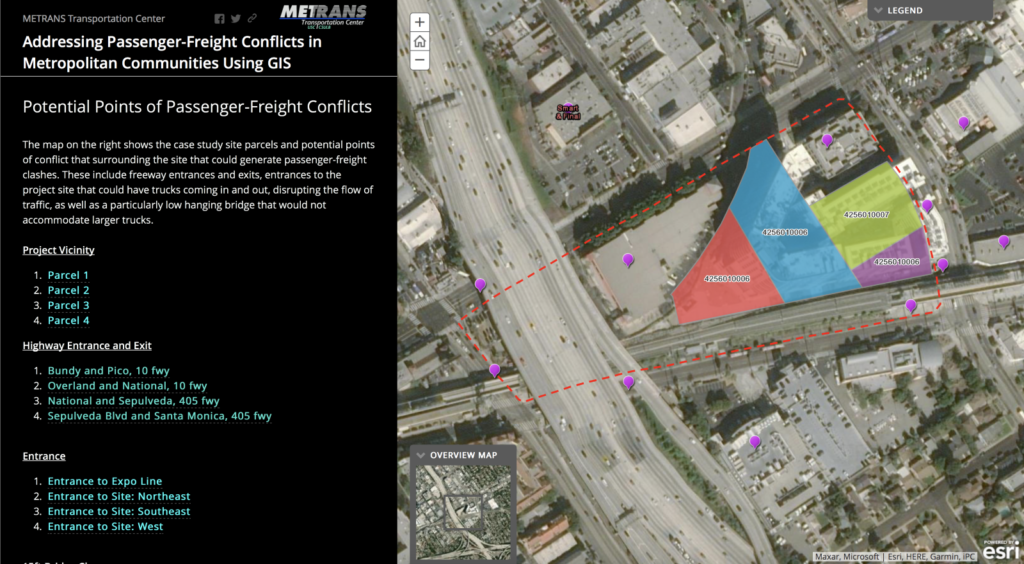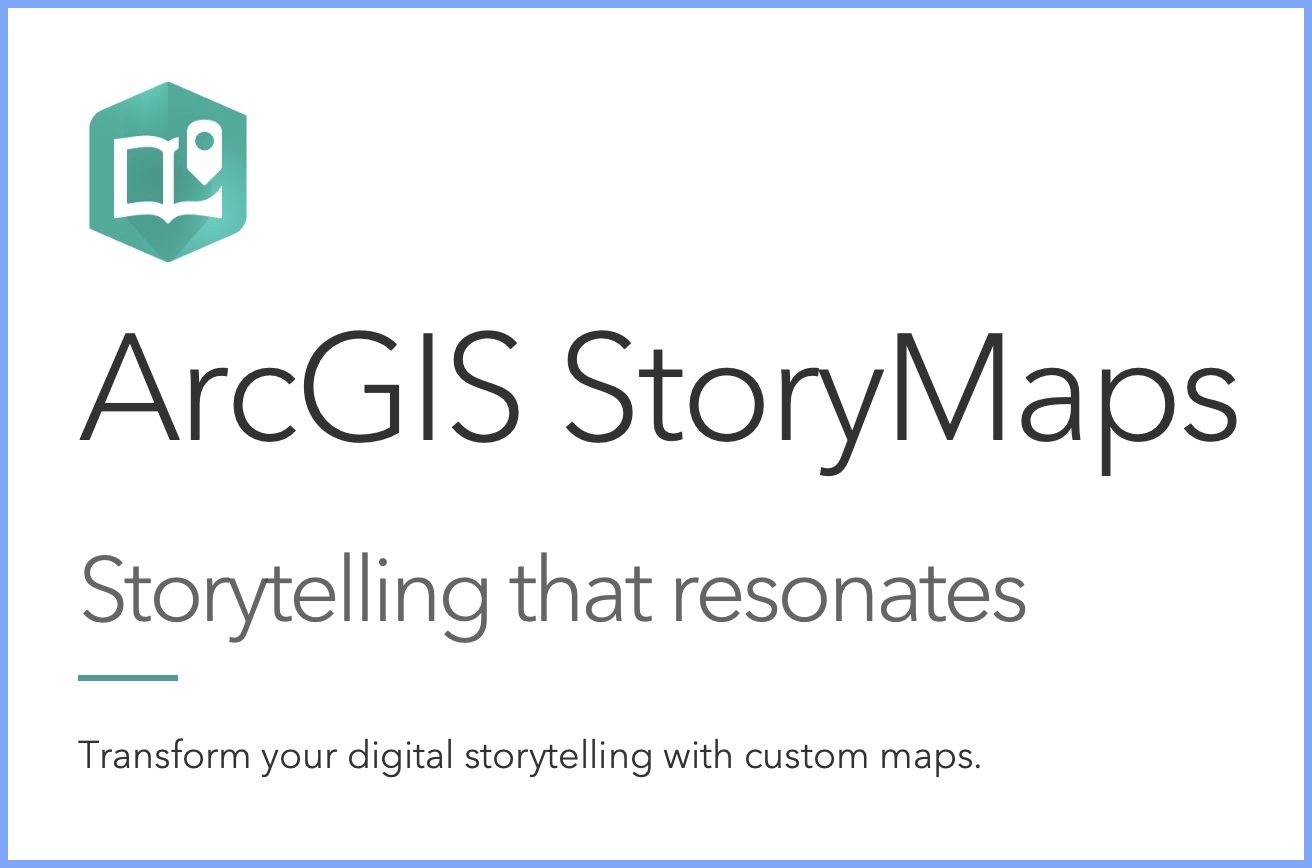 Esri, the global market leader in GIS, has brought innovation to realm of digital storytelling with ArcGIS StoryMaps. Users can now tell remarkable stories through the use of custom maps that inform, inspire, and help contextualize narratives with rich features like embedded text, images, videos, and other online content. Esri’s ArcGIS StoryMaps offers ready-to-use templates and guides that help make the process of digital storytelling powerful, creative, and user-friendly.
Esri, the global market leader in GIS, has brought innovation to realm of digital storytelling with ArcGIS StoryMaps. Users can now tell remarkable stories through the use of custom maps that inform, inspire, and help contextualize narratives with rich features like embedded text, images, videos, and other online content. Esri’s ArcGIS StoryMaps offers ready-to-use templates and guides that help make the process of digital storytelling powerful, creative, and user-friendly.
At the Center for International Trade and Transportation (CITT) and the Southwest Transportation Workforce Center (SWTWC), both housed at California State University Long Beach, StoryMaps provide a versatile approach to visualizing research outcomes and developing training and presentation content. Projects benefitting from the use of StoryMaps represent a wide range of disciplines, from Workforce Training & Career Development to Supply Chain Infrastructure to GIS in Transportation Planning.
For Workforce Training & Career Development, CITT used StoryMaps as a curricular tool to demonstrate how data can connect images to narrative to better illustrate research project outcomes, a capability that can be particularly valuable when communicating with diverse audiences. For Supply Chain Infrastructure, StoryMaps have helped researchers share the impact of COVID-19 on the supply chain while also offering useful interactive maps that help visualize that supply chain throughout Southern California. And for GIS in Transportation Planning, CITT created StoryMaps that show how GIS data can be applied to transportation planning to reveal unique characteristics of cities, communities and individual blocks.
Checkout each of these research areas below to see specific examples of how StoryMaps helped turn raw GIS datasets into visual, impactful narratives that both inform and engage.
Workforce Training & Career Development
- Southern California Regional Workforce Development Needs Assessment for the Transportation and Supply Chain Industry Sectors presents promising practice recommendations for program content, design, and delivery with developments concerning the role of institutes of higher education in workforce education for supply chain industry sectors.
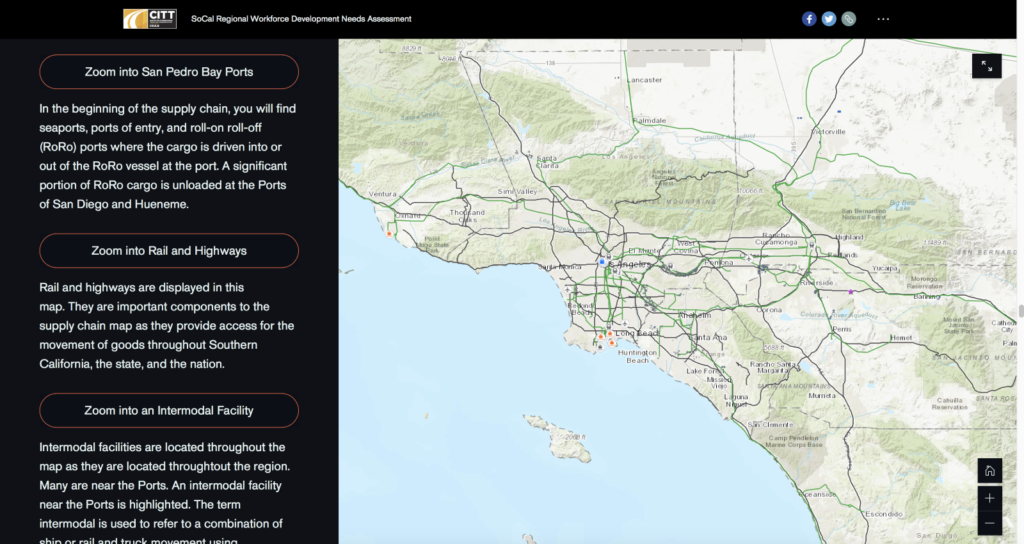
- Visualizing Sustainable Transportation Choices for K-12 offers a discussion on the benefits of introducing spatial thinking into K-12 education. Incorporating GIS into school projects can help students become better spatial thinkers by collecting, analyzing, and visualizing everyday assets around them, such as how their transportation choices affect issues like sustainability.
- Driving GIS Career Pathways provides a comprehensive summary of the various steps to choosing a career in GIS, by presenting “Stacie’s” journey from high school graduation to undergraduate degree to employment.
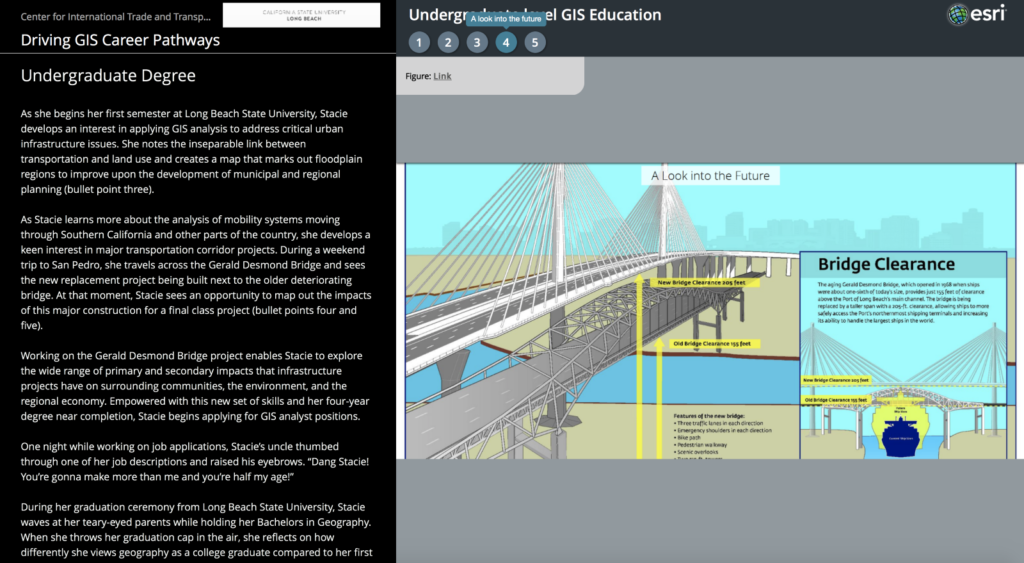
- Top 25 Transportation Job Projections in the Southwest Region highlights the top transportation sector job forecasts for each state within the SWTWC regional territory and details critical occupations and related labor market data.
Supply Chain Infrastructure
- The Battle for the Curb: Managing Local Goods Movement in the Age of E-Commerce serves as an instructional tool in a pilot course for public and private professionals on the biggest goods movement challenges in the 21st century occurring in last-mile and last foot urban freight planning.
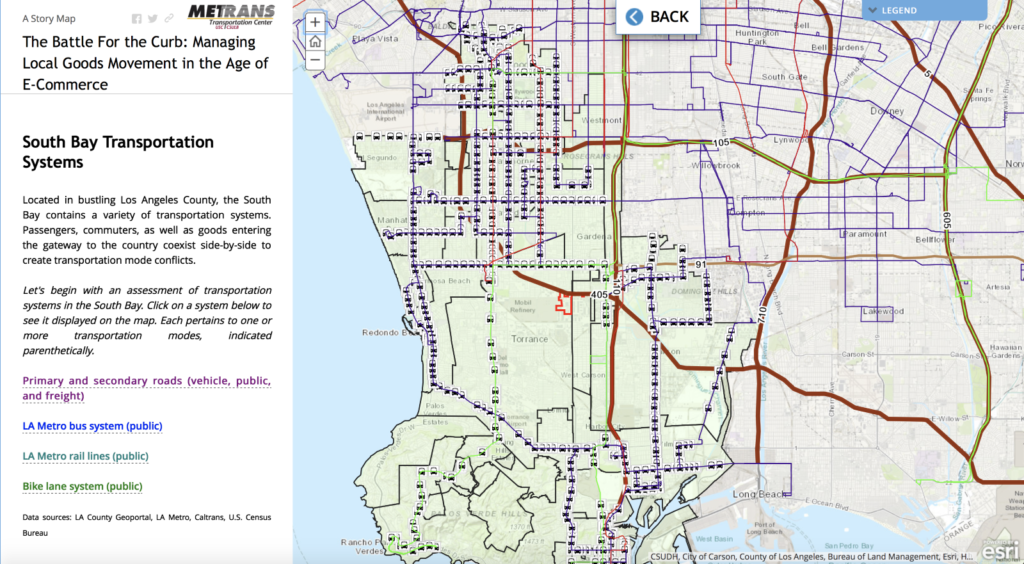
- Freight Corridor Planning and Improvement opens a discussion on designing and planning more efficient ways to reliably move freight in specific freeway segments with high truck volumes at a more granular level through California’s Inland Empire warehousing region in Ontario.
- Maintaining and Improving Freight Corridors Using GIS opens a discussion on designing and planning more efficient ways to reliably move freight in specific freeway segments with high truck volumes at a more granular level in California’s Central Valley agricultural region in Sacramento.
- Digital Freight Matching Technology and the Role of GIS demonstrates the potential benefits of applying DFM to the trucking industry and the importance of that GIS plays in alleviating route inefficiencies and overall traffic congestion.
GIS in Transportation Planning
- The Role of GIS in Protecting Cultural Resources. By incorporating an accessible data collection tool like Survey 123, transportation efforts can soon incorporate the protection and preservation of cultural resources.
- Assessing Los Angeles’ Complex Transportation Network emphasizes GIS and its importance in making well-informed decisions through the visualization of geospatial data, access of real-time transportation and survey data, and ability to perform comprehensive analyses on LA’s complex transportation datasets.
- Addressing Passenger-Freight Conflicts in Metropolitan Communities Using GIS. Visualizing and highlighting areas of conflict in metropolitan communities by collecting vital field data with GIS and other geospatial technologies helps transportation and regional planners make intelligent and informed decisions.
